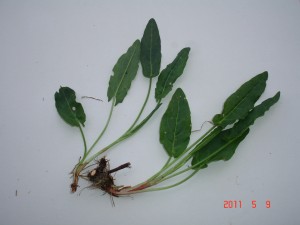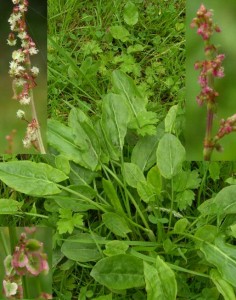Common Sorrel
Latin: Rumex acetosa
Irish: Samhadh bó
This is an abundant native perennial that grows as a clump on grassy banks and in pastures. The leaves are elongated oval in shape and have two lobes at the base that point backwards.
In June and July reddish-green flowers are produced on whorled spikes up to 60cm tall. Male and female flowers are borne on separate plants (dioecious) and are wind pollinated.
The leaves have a high oxalic acid content which gives them a sour, acid-lemon, thirst-quenching taste and they have been used for medicinal and culinary purposes for centuries. Sorrel has been an important food plant in Ireland since earliest times. It was regularly collected from the wild and eaten raw or cooked in a soup or broth. It was also regularly used in Irish folk medicine for a variety of purposes. For example, it was used to “cleanse the system”, to heal sores and bruises and in poultices for boils, septic sores and chickenpox.
The juice of the plant, sometimes sold as ‘essential salt of lemon’, removes stains from linen and also ink stains (but not ball-point ink) from white material.

